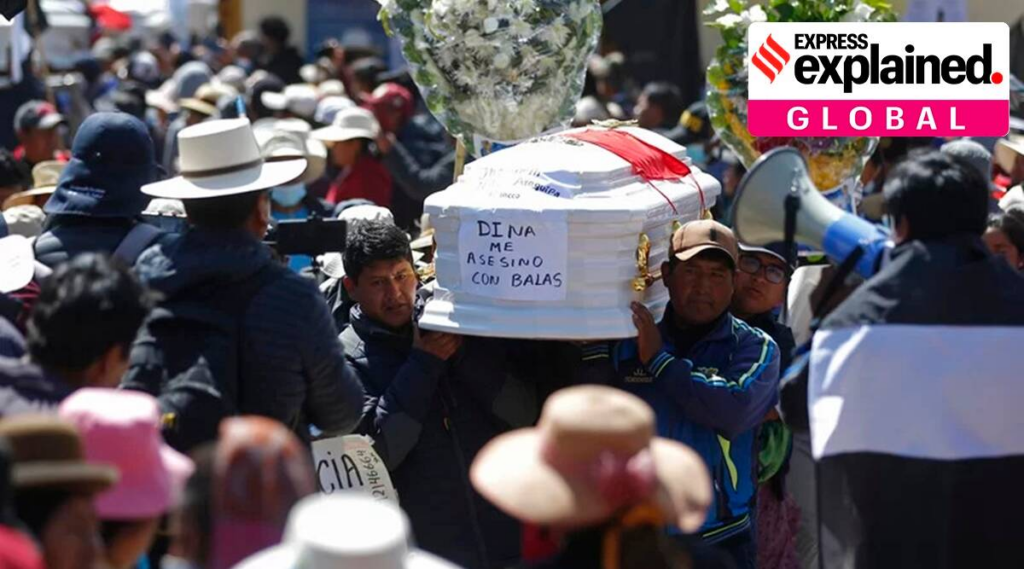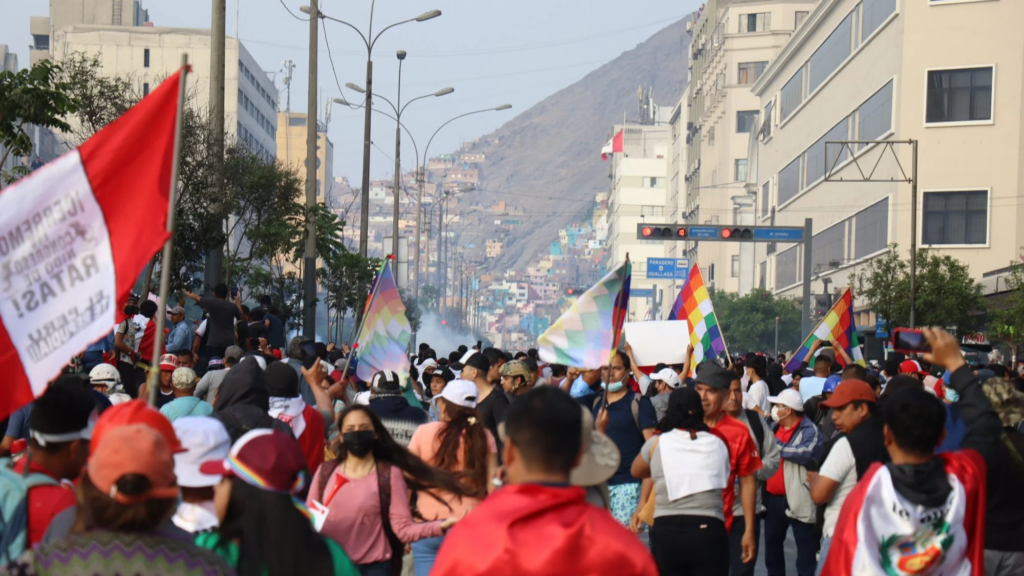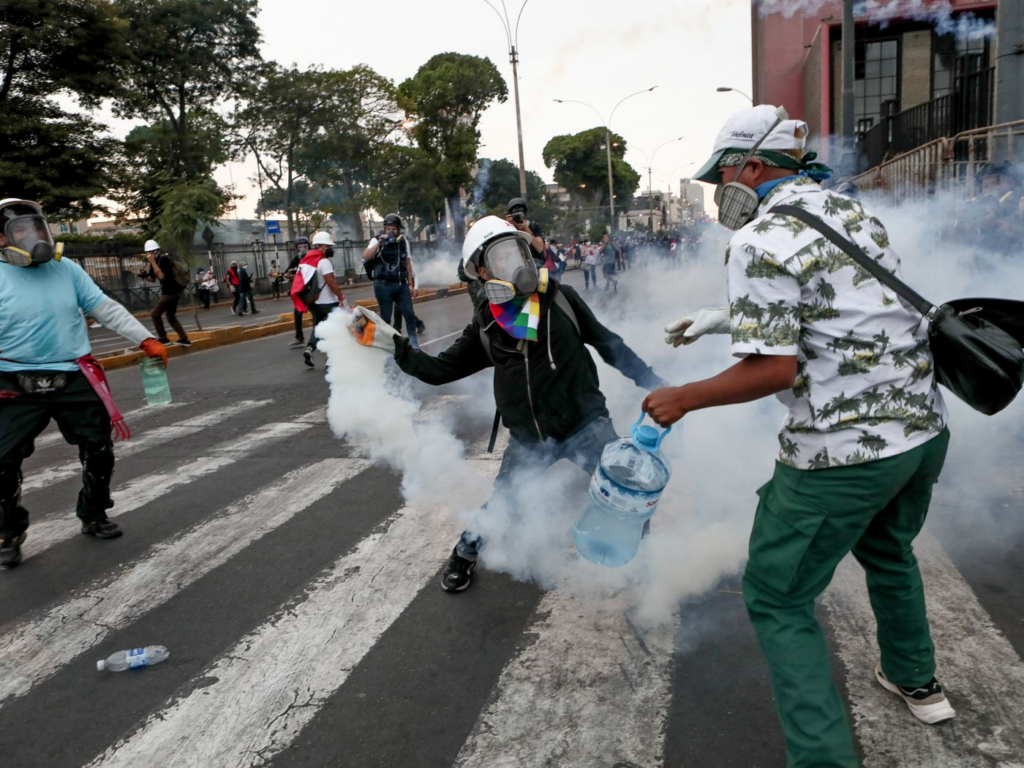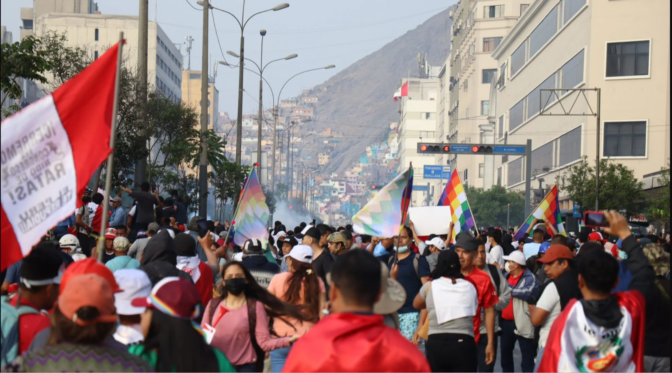The most fierce protests in Peru in at least a century have killed at least sixty people. The protests stem from the country’s recent political turmoil and severe ethnic tensions. Although Peru’s government—and Congress in particular—has responded poorly, uncertainties persist, so the international community should exercise restraint. The international community may aid by escalating its calls for human-rights investigations and prosecutions and long-term measures to end ethnic isolation.
Peru’s Recent Protests
Protesters and security forces clashed on December 7, 2022, although they subsided through the holidays, re-emerged in January and February, then subsided again in late February. Protesters blocked highways and tried to seize airports, challenging Peru’s police and military. Machu Picchu was also halted by protesters.
Confrontations are costly. Security officers used close-range live bullets in the opening weeks of the protests. As of mid-March, the security personnel had murdered 48 civilians and injured almost 1,300 with excessive force. Protesters injured 368 and murdered one police officer.
Peru has seen more deaths than the protests of the last four years in Chile, Colombia, and Ecuador, which each had fewer than fifty dead. Roadblocks and airport restrictions have hurt Peruvian commerce. As of February, production damages were $950 million and infrastructural damages far higher.

Protesters want politics. Most Peruvians want presidential and parliament elections in late 2023 or early 2024. Peru’s past elections were held before COVID-19 immunization, limiting political campaigning, pre-election polling, and neighbors’ scheming. Many Peruvians desired a rematch from the start because the two runoff contenders were ideological extremists without broad support.
Many leftists view President Dina Boluarte as a traitor because she was a far-left party vice-president before switching to the right. Elections are scheduled for 2026, but electoral experts believe they can be staged this year.
Protesters want Boluarte to resign because she failed to stop security forces from violating human rights and because it would lead to new elections in six months. A January poll found that 93% of Peruvians want early elections and 73% want Boluarte to resign.
Protests have non-political causes. The southern highlands, home to Cusco, the Incan capital, are the main protest site, unlike in other Andean countries. Lima’s Caucasians have discriminated against the southern highlanders.
The Shining Path, a violent Maoist insurgency, was based in the region and caused an internal war that killed 70,000 Peruvians in the 1980s and early 1990s. The deaths occurred during clandestine rebel assassinations and security force attacks on entire Shining Path sympathizer communities.
Castillo’s impeachment on December 7 was especially painful for indigenous and mixed-race Peruvians. Castillo, an indigenous country schoolteacher, was well aware of his incompetence and perhaps corruption, but most southern highlanders undoubtedly identified with him.

While most highlanders knew Castillo’s December 7 “autogolpe” (the announcement that he would close Congress and rule by decree, which led to his impeachment) was unconstitutional and undemocratic, they believed Congress had been obstructionist and had not given Castillo a chance.
Protest Response by Boluarte Government
The Boluarte government’s unwillingness to condemn the security forces’ brutality in the early weeks of the protests and demand investigations and convictions was its biggest mistake. Citizens’ resentment at security forces’ atrocities sparked protests.
Protesters were still storming airports and blocking roadways, throwing rocks and starting fires. If the government condemned the security personnel, they might not leave their stations.
A president may also struggle to apportion blame. Peru’s police invaded the National University of San Marcos, where demonstrators were sheltering, in mid-January. The cops brutally detained over 100 persons, many of whom were not protesters. However, culpability for arbitrary force was unclear.
The government had trouble talking to demonstrators and meeting their requests for numerous reasons. First, unlike other protest movements, no leader emerged. The government seemed willing to talk—but with whom? Protesters varied. The government seemed willing to talk—but with whom?

Protesters varied. The government sought out to southern highland governors, but they were not protest leaders. Boluarte might have met demonstrators with her security detail and invited a few to discuss, which would have altered the issue, but she didn’t.
The overtly political demands made the protests tough. In contrast to Chile’s metro-fare increases and Colombia’s tax increase, Peru’s demonstrators want officials to put the public good before their own. Early elections would disqualify existing members from re-election, hence they have rejected these proposals.
Most Peruvians are furious at legislators’ disdain for popular opinion, but other politicians argue that new elections wouldn’t improve results because Peru’s political parties are splintered. However, less organized party leaders make this claim.
Peru’s 2021 election did not produce a popular candidate, but COVID-19 curtailed political promotion and polls, preventing strategic voting. Political leaders could also allow legislators to run again and require a second round of presidential elections if no candidate receives more than 30% of the vote.
The Boluarte government’s response to the protests and the consequences of her resignation or impeachment are difficult to assess. If she leaves, elections would be called within six months.

After her departure, Congress President José Williams, a retired military commander from a right-wing party, would take over. Some legislators have argued that early elections would only be presidential, not legislative—and Peru’s Congress is even more loathed than its president.
International Reaction
The international community should exercise restraint given Peru’s political complexity and uncertainty. The Biden administration has generally supported the Boluarte government with moderation. The Biden administration has options. The hemisphere supports human rights and ethnic inclusiveness, and the Biden administration might do more to promote them.
Unfortunately, in 2023, the hemisphere is divided regarding the legitimacy of many administrations and unlikely to agree on Peru’s government’s destiny. After Peru’s then-President Alberto Fujimori’s 1992 “autogolpe,” the Organization of American States (OAS) called for a hemispheric summit and won Fujimori’s concessions. Today, such a result is unachievable.

The OAS is deeply divided. Presidents of Argentina, Bolivia, Colombia, and Mexico supported Castillo in mid-December. In February, Mexico’s president Andrés Manuel López Obrador (“AMLO”) said he would not transfer the Pacific Alliance presidency to Peru since the Boluarte government was illegitimate.
Critics said AMLO’s choice violated his long-held non-intervention and sovereignty principles. Peru’s backing for Castillo was abhorrent, and diplomatic tensions were high.
International human rights can unite the hemisphere. Commendably, the OAS’s Inter-American Commission on Human Rights (IACHR) visited Peru in January to examine human-rights abuses, particularly at the National University of San Marcos.
The Biden administration has lightly stressed human rights and responsibility for violators. After the IACHR report is released in several weeks, the Biden administration should encourage the OAS to follow up and emphasize its own concerns.
The Biden administration should offer hemispheric ethnic inclusion policy discussions. Ethnic inclusion has lagged behind gender inclusion in the hemisphere, which has grown in recent decades. Even the language regarding ethnic inclusion in the hemisphere is deficient.
There is an emphasis on indigenous peoples, but in Latin America, color is a continuum from white to indigenous that encompasses people from Africa, the Middle East, and Asia. Thus, ethnic exclusion statistics—such as judges, lawmakers, and CEOs by ethnicity—are rarely recorded or incorporated in democracy or social justice analyses.

The US must stress its dark history of slavery and segregation and its contemporary racial and gender education debates in hemispheric discussions about ethnic inclusion policy. However, socialist administrations in Brazil, Bolivia, Chile, and Colombia prioritize ethnic exclusion and injustice.
This issue may unite the Biden administration with Latin America’s socialist governments. The OAS would host ad hoc activities by civil society, industry, academics, and media. USAID could contribute funds.
Stability and Democracy
Most of the world has experienced political upheaval recently. Ideological polarization and anti-democratic standards have increased worldwide, including Peru. Economic downturns, pandemic deaths, corruption scandals, social media growth, and Peru’s troubled 2021 election are among the factors.
Between 2001 and 2016, Peru had democratic stability, strong economic growth, and significant poverty reduction. Recurrence is possible. Interim President Francisco Sagasti (November 2020–July 2021) was popular and competent.
Peruvian protests have subsided. The Boluarte government appears to want professional security forces and more cooperation with regional governments to meet popular demands. Boluarte appears to have strong ties to a variety of political factions, including those on Peru’s center and right.
Climate disasters in March 2023 in Peru moved public attention. However, Peru is a tinderbox, and additional Boluarte administration blunders could spark new protests.
Peru has advanced politically, socially, and economically during the past century, despite major challenges to democratic administration. Advances can be made again with international support for human rights and ethnic inclusiveness.

